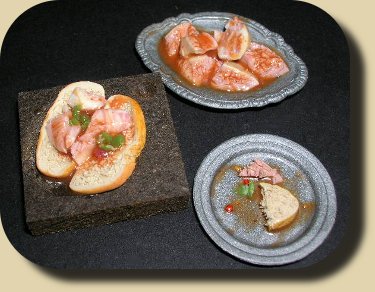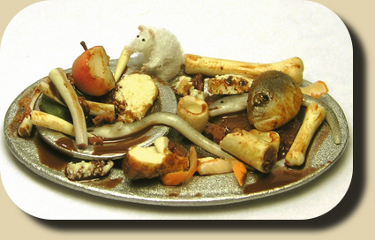
November 2010, Issue 10
The Tudors
Page 70
Continue The Tudors
The Feasts
The Feasts would consist of three courses, each one having a dozen or so dishes.
 The first two courses were meat and/or fish and the third, 'the banquet,' would be the sweet course. This was often served in a seperate room.
The first two courses were meat and/or fish and the third, 'the banquet,' would be the sweet course. This was often served in a seperate room.
Fine white bread, called Manchet was eaten, along with vast quantities of meat. It is interesting that the law dictated meat could only be eaten on 'Flesh days' - Fridays, Saturdays and the forty days preceding Easter were considered 'Fish days'.
 One of the most popular 'Flesh Day' meals was Pigeon Pie, readily available from the household dovecots. Pigeon was not the only pie they ate. Venison, blackbird, mutton, pork and swan are just a few others. Swans, herons and peacocks were skinned, cooked and then sewn back inside their skins and feathers and presented on large platters of vegetables and salads.
One of the most popular 'Flesh Day' meals was Pigeon Pie, readily available from the household dovecots. Pigeon was not the only pie they ate. Venison, blackbird, mutton, pork and swan are just a few others. Swans, herons and peacocks were skinned, cooked and then sewn back inside their skins and feathers and presented on large platters of vegetables and salads.
Another really weird example of presentation was the Cockentrice - half cockerel (head) and half pig (back half) sewn together! Pigs were kept through the winter months so were plentiful and also eaten in large quantities. A Boars head was very traditional and normally served with an apple or orange in its mouth.
Other animals were slaughtered in autumn and were salted and stored. When used they would have to be soaked for some time to reduce the saltiness, then baked or boiled with spices to mask the flavour.
Custom Dolls, Houses & Miniatures / CDHM







